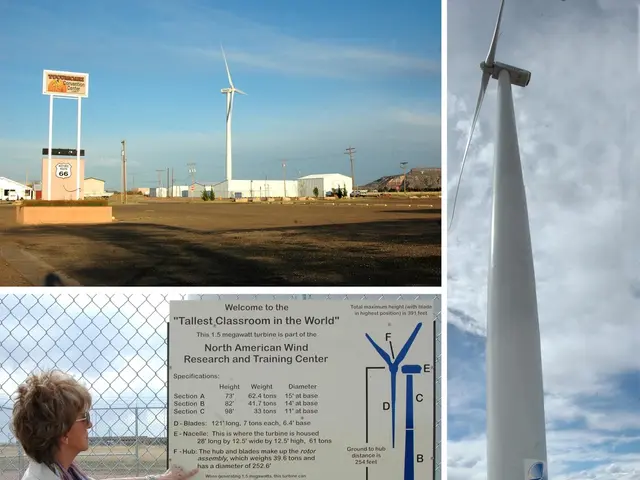Indications that you're transitioning from a middle-class lifestyle to affluence
In the realm of personal finance, the divide between wealthy and middle-class individuals is not merely about the amount of money one possesses, but rather the approach to managing, spending, and growing wealth.
True wealth provides more than just financial security; it offers freedom, opportunity, and the capacity to allocate time according to values and priorities, rather than economic necessity. Wealthy individuals, in their financial journey, intentionally develop mindsets and habits that support continued economic growth and the purposeful use of resources.
A key distinction lies in financial behavior. Wealthy people meticulously track every dollar, treating money management as a science, with detailed budgets and spending analyses. In contrast, middle-class individuals often use rough budgeting or make spending decisions more spontaneously. Instead of focusing on limiting spending, wealthy individuals focus on expanding income through investments and assets.
Spending priorities also differ significantly. Wealthy individuals rarely upgrade their lifestyle with income increases; additional earnings are largely funneled into investments such as real estate or business ventures. The middle class, however, is more prone to lifestyle inflation, upgrading cars, vacations, or homes as income rises. Wealthy people invest in in-home services regularly, such as personal chefs and trainers, as a form of time optimization and privacy, whereas these are occasional luxuries for the middle class.
Opportunities and mindset also play a crucial role. Wealthy individuals prioritize building and maintaining assets that generate income, enabling long-term financial stability even if active income fluctuates. Middle-class individuals tend to focus more on short-term consumption and lifestyle impressions, sometimes at the expense of sustainable wealth growth.
Recognizing time as their most precious asset, wealthy individuals invest significantly in services, systems, and staff that allow them to reclaim time. They evaluate expenditures not just on monetary cost but on the time value they provide.
Wealthy individuals also develop comprehensive philanthropic strategies, such as establishing donor-advised funds, creating family foundations, practicing impact investing, or engaging in venture philanthropy, to optimize the financial and tax implications of giving while making a significant social impact.
This dynamic contributes to the widening gap in wealth and financial security between the two groups. As wealth grows, financial priorities shift, with some middle-class individuals cautiously allowing marginal increases in spending, but still avoiding major lifestyle upgrades until their wealth justifies it.
In conclusion, the wealthy exhibit a long-term, disciplined approach emphasizing wealth accumulation and income generation, while the middle class often emphasizes lifestyle enhancement and managing expenses within current income constraints. Understanding these distinctions can help individuals make informed decisions about their financial future.
[1] CNBC Make It. (2019). What the rich do differently to become richer. [online] Available at: https://www.cnbc.com/2019/03/20/what-the-rich-do-differently-to-become-richer.html
[2] Forbes. (2018). The 5 Key Differences Between Rich People And Middle-Class People. [online] Available at: https://www.forbes.com/sites/forbescoachescouncil/2018/07/11/the-5-key-differences-between-rich-people-and-middle-class-people/?sh=74e04f6c70a5
[3] Business Insider. (2019). The 10 biggest differences between rich people and poor people, according to a billionaire. [online] Available at: https://www.businessinsider.com/rich-people-poor-people-2019-1
[4] The Balance. (2019). 5 Key Differences Between Rich and Middle-Class People. [online] Available at: https://www.thebalance.com/the-5-key-differences-between-rich-and-middle-class-people-2388677
[5] HuffPost. (2019). The 10 Biggest Differences Between Rich People And The Middle Class. [online] Available at: https://www.huffpost.com/entry/the-10-biggest-differences-between-rich-people-and-the-middle-class_b_5cd4d640e4b06c43c39f3c08
- Wealthy individuals intentionally diversify their portfolio for sustained financial growth, whereas middle-class people may not focus as much on investing, instead managing their expenses within their current income.
- A key difference in wealth management between the wealthy and middle class lies in their approach to income expansion. The wealthy focus on generating income through diversified investments and assets, while middle-class people primarily concentrate on managing expenses.
- In wealth-management practices, wealthy people have a long-term focus on creating assets that generate steady income, whereas the middle class tends to prioritize short-term consumption and lifestyle, sometimes forgoing sustainable wealth growth.




